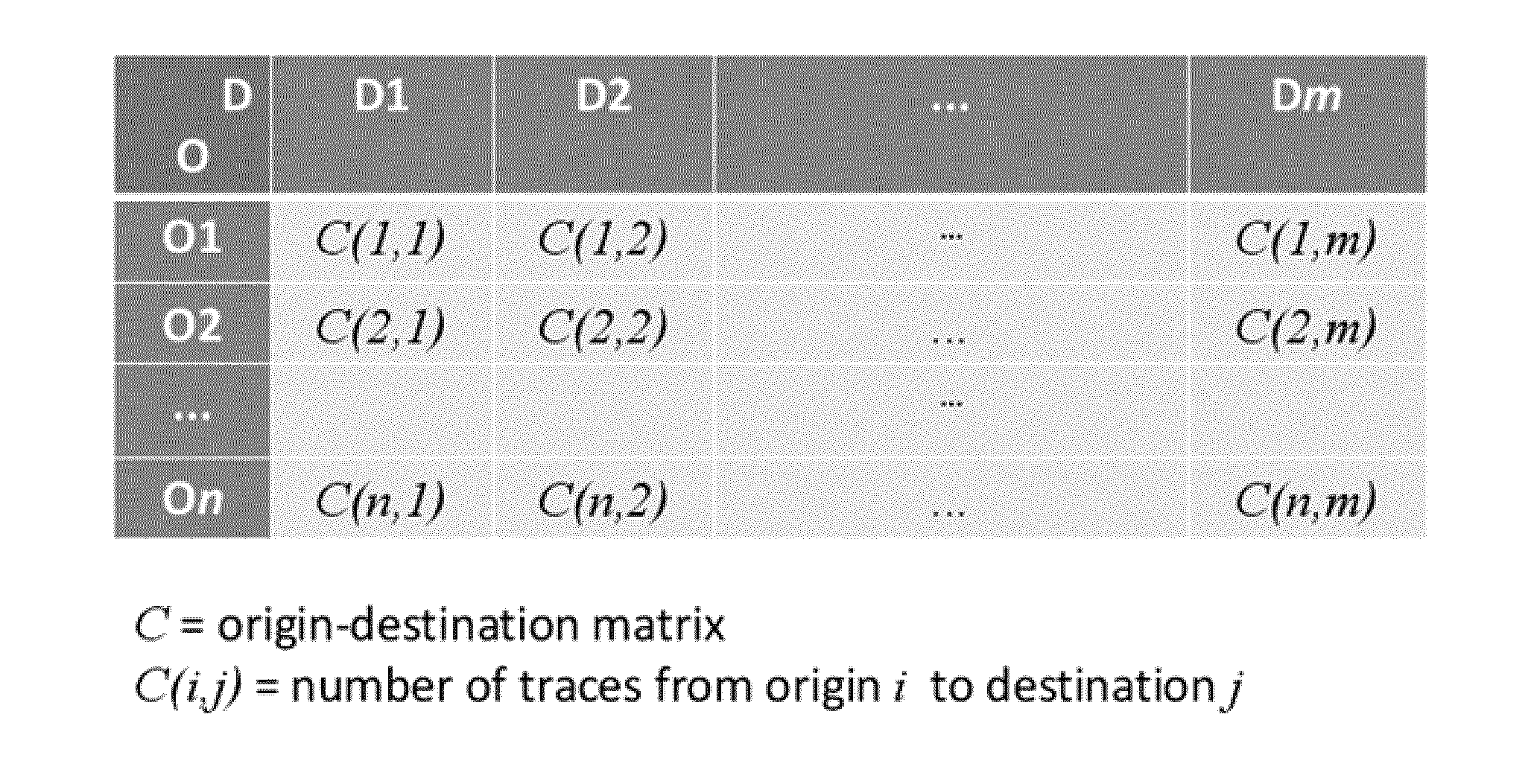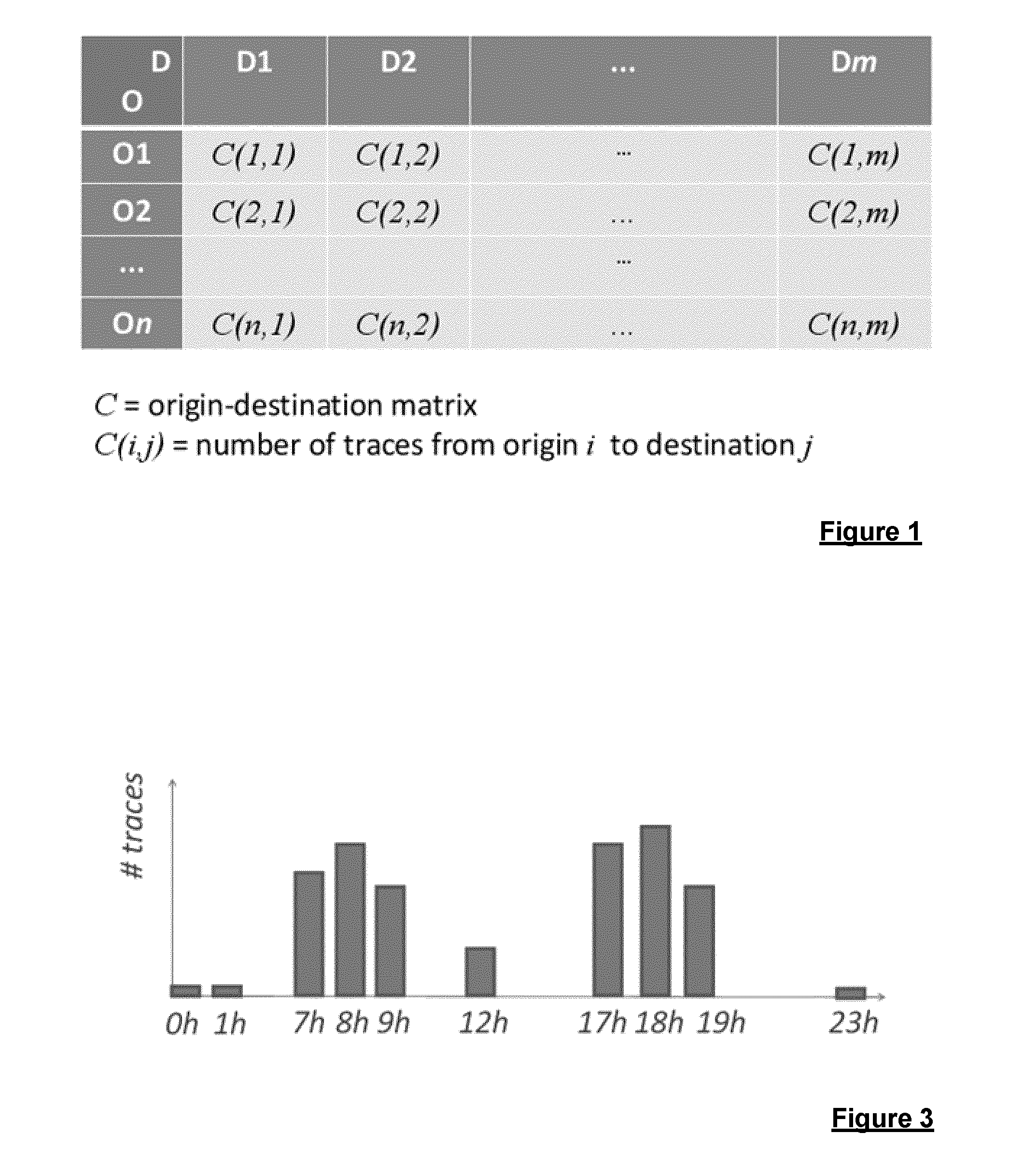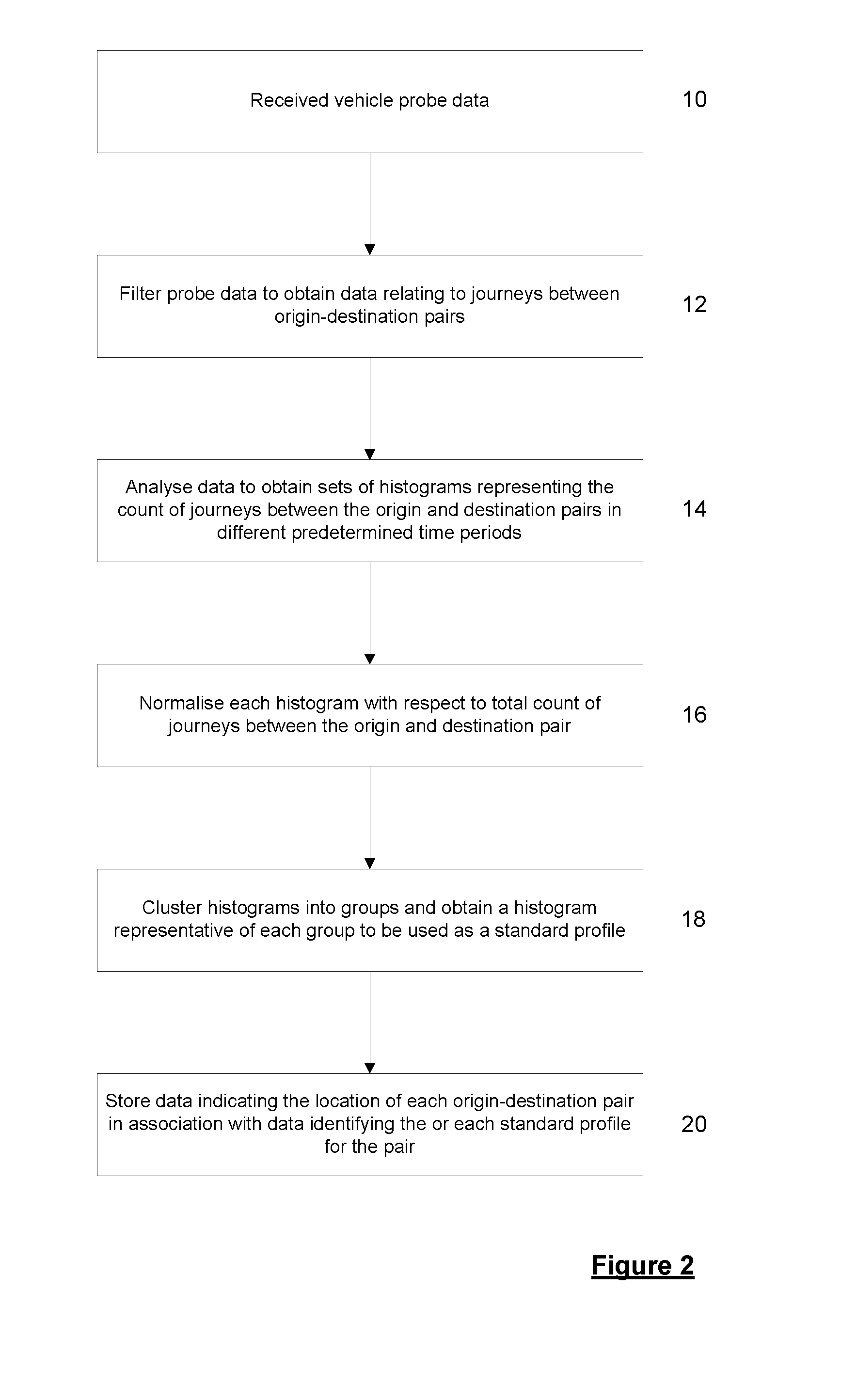Digital location-based data methods and product
a technology of location-based data and digital data, applied in relational databases, traffic control systems, instruments, etc., can solve the problems of reducing the number of profiles which need to be stored, reducing the number of profiles, and reducing the amount of data
- Summary
- Abstract
- Description
- Claims
- Application Information
AI Technical Summary
Benefits of technology
Problems solved by technology
Method used
Image
Examples
Embodiment Construction
[0091]By way of background, FIG. 1 illustrates a conventional origin-destination matrix C based on vehicle probe data. This matrix represents a number of origin-destination pairs: (O1,D1), (O1,D2), . . . (On,Dm). In respect of each origin-destination pair (i,j), a count C(i,j) is stored in the matrix. The count is the number of probe traces having the respective origin i and destination j. The count of probe traces is taken to represent the number of journeys made from the origin to the destination. One disadvantage of this type of origin-destination matrix is that time related information is not captured. For example for a given origin-destination pair (O1,D1), the matrix simply stores a total count for the number of journeys which are considered to have taken place between the origin and destination based on the number of probe traces extending from the origin-destination over a given period used to sample the probe data. There is no information present as to how the count of jour...
PUM
 Login to View More
Login to View More Abstract
Description
Claims
Application Information
 Login to View More
Login to View More - R&D
- Intellectual Property
- Life Sciences
- Materials
- Tech Scout
- Unparalleled Data Quality
- Higher Quality Content
- 60% Fewer Hallucinations
Browse by: Latest US Patents, China's latest patents, Technical Efficacy Thesaurus, Application Domain, Technology Topic, Popular Technical Reports.
© 2025 PatSnap. All rights reserved.Legal|Privacy policy|Modern Slavery Act Transparency Statement|Sitemap|About US| Contact US: help@patsnap.com



